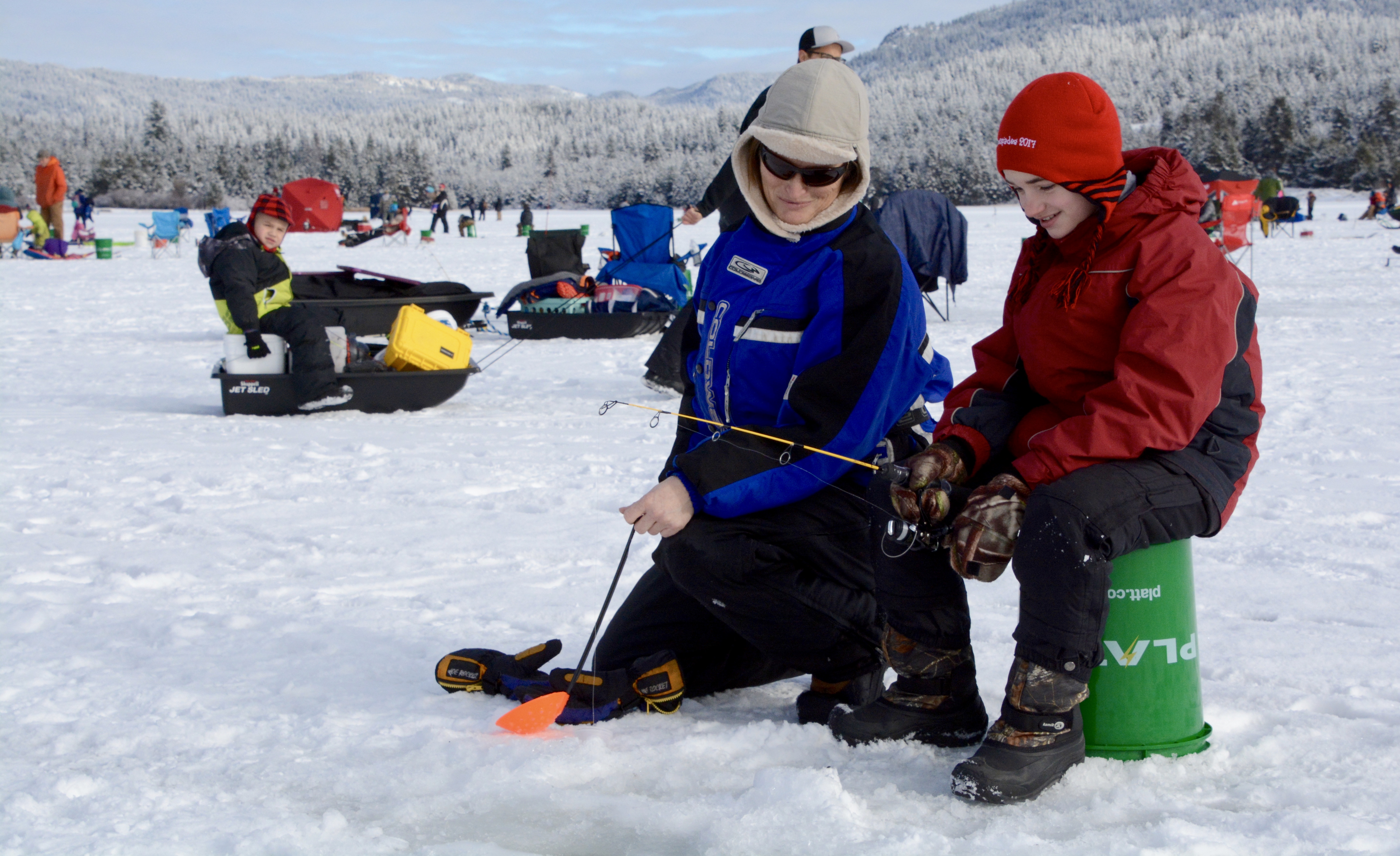Ice Fishing Tips
Ice fishing in Idaho is not only a fun and inexpensive experience, it's a great way to catch some tasty fish. With a few pieces of equipment, the right tackle and techniques, you'll be ready for a day on the ice.
Ice fishing is surprisingly beginner-friendly and is the only type of fishing that requires an ice auger. Here are some recommendations for ice fishing gear:
- An ice auger to drill holes. A manual auger is relatively inexpensive and can be bought for under $100. You can also buy a gas-powered auger or an auger that attaches to a cordless drill.
- A slotted ladle will keep your fishing holes free of ice.
- A short jigging rod and/or ice-fishing tip-up rigs are handy, but you can also use a standard-sized rod. Because you can fish up to five rods, a combination of rods and tip-ups increase your odds of catching fish.
Targets, tackle, and techniques
The two most common fish caught are trout and perch, but you might also catch bluegill, crappie, kokanee, and even bass. Considering you’re catching the same fish ice fishing that you would catch other times of year, you’d think fishing techniques would be the same, but ice fishing is a little different.
Here are some tips for ice fishing:
- Try different depths to find fish. Generally speaking, perch like deeper water (10 to 40 feet) and are close to the bottom. Trout will often be found throughout the water column and may be caught cruising within a few feet of the ice.
- One way to measure the depth you’re fishing is to drop your bait to the bottom and count the revolutions of your reel handle as you reel your bait off the bottom. When you figure out where the fish are biting, you can return to that depth.
- Jigging is effective. To jig, slowly bring the rig up about one foot then allow it to settle back down, and repeat. The movement of the bait attracts a fish’s attention. Some anglers prefer to just set the line and watch for a strike.
- Perch, bluegill, and crappie can be delicate biters and small hooks, small bobbers, and a light touch are often needed to hook fish.
- As a general guideline, trout are cruisers, but perch don’t move a lot. If you’re after perch, move around until you find them. Sometimes trout will find your bait without you having to find them, but not always.
- If you’re not getting bites, move to a different location and drill new holes, especially if you see others catching fish.
- Perch are a schooling fish. Once you find them, the action can be fast.

